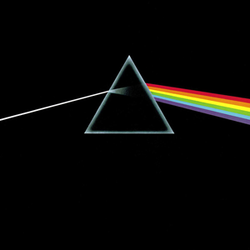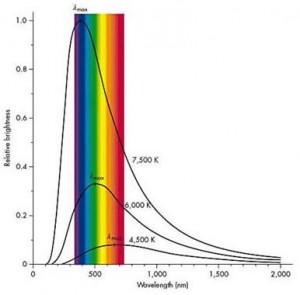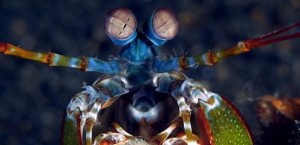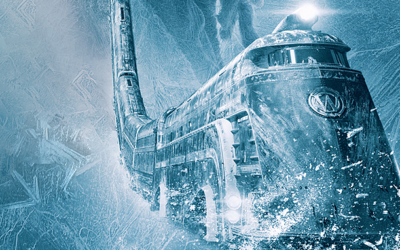Hold on – this might meander a little.
When I was growing up, DC Comics Presents #26 (1980) was one of my holy grails. Older fans know what’s up with it – the issue was the first appearance of The New Teen Titans by Marv Wolfman and George Perez. It also had a story about a (then) obscure Golden Age character – “Whatever Happened to Sargon the Sorcerer?” as well as the title story, “Between Friend and Foe,” which teamed up Superman (it was his title, after all) and Green Lantern. That main story written by Marv Wolfman and Jim Starlin with art by Starlin (which lead into a Starlin-written and drawn run which was the best DC Comics Presents ever saw – in my opinion).
In the story, Green Lantern is lured to another dimension where he encounters a lumpy, tentacled creature calling itself N’Gon. As the story went, ages back, N’Gon was flying near a green star, and the radiation of the star split N’Gon into two identical versions which, of course, hated one another. The one Green Lantern ran afoul of was trying to amass as much power as it could to destroy it’s other half, but that storyline isn’t what we’re going to talk about from here on out.
What we are talking about – rewind just a little bit – N’Gon became the N’Gon of the story by flying too close to a green star.
Green star – cool, right? It’s something that, you’d think should show up, especially in comics where you’ve already got one of the greatest heroes coming from a planet that orbited a red star (that would be Superman, Krytpon and Rao, respectively), and you’ve got a whole group of Green Lanterns at DC that could exploit the idea of a green star to its fullest. Yet, aside from DC Comics Presents #26 (and probably a few other super-obscure references that I wasn’t able to find) green stars don’t show up in comics.
Why not? The writers and artists, for the most part, are getting it right – there are no green stars.
To explain, we need to look at the things that contribute to a star’s “color” – temperature and how we see things.
The first – temperature. Anything that has a temperature above absolute zero (-273 degrees C) emits some kind of “light.” The type of light depends on the temperature – the higher the temperature, the shorter the wavelength of the light. Relatively cooler things, say, a glowing bar of iron just starting to be heated up by an acetylene torch will glow red, and then more brightly orange as it gets hotter. Find a clear incandescent light bulb (an endangered species) and look (briefly) at the filament while the light is on. White, right? That’s because the tungsten of the bulb is about 3000 degrees C – much hotter than that glowing bar of iron.
A QUICK ASIDE ABOUT LIGHT BULBS…
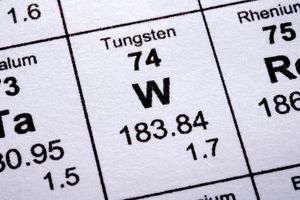
Tungsten – Atomic # 74. The “W” comes from its German name, Wolfram. It was isolated by two Spanish brothers, José and Fausto Elhuyar 1783.
By the way – Tungsten – W on your handy periodic table, is used…er, was used in light bulbs because it’s (a) cheap (b) has the relatively high resistance needed for the job and (c) melts at about 3400 degrees C. But you’re right – it’s not immortal. At temperatures high enough to incandesce (glow) tungsten atoms actually evaporate, weakening the filament over time (and getting on the inside of the bulb). Lose enough tungsten atoms and well, we all know what happens then.
Also – remember this when you get down to the Black Body Radiation image below – an incandescent bulb’s temperature is about 3200 Kelvin, which means it peaks way over to the right, in the infrared part of the spectrum, in other words, turn on that light, and it’s mostly producing infrared radiation, which we call heat. In fact, only about 10% of the energy that you put into an incandescent bulb comes out as light, the rest is heat. Yeah, I know – it’s crazy that we call them “lights.” We should call them “heats” – because that’s what they make. It’s because these things are such energy sucks and give such little bang (visible light) for our energy buck that there’s a push on to replace incandescent bulbs with compact fluorescent, LED or some other kind of smart and sexy bulbs.
By the way – put a layer of red paint on an incandescent bulb (you naughty thing, you…) and your bulb is still producing white light – that’s all it can do. The layer of coloring on the bulb is just holding back every color except the red, which it lets out. It has a negligible effect on the amount of heat produced (maybe a couple of degrees more), largely because incandescent bulbs just produce so much heat.
END QUICK ASIDE ABOUT LIGHT BULBS
So anyway – the hotter the star, the shorter the wavelength of the light emitted. How to remember what color that means? Remember ROY G BIV from high school…or DC’s In Blackest Night event? Red, Orange, Yellow, Green, Blue, Indigo and Violet are the colors of the visible light portion of the electromagnetic spectrum – the part we can see. Red has the longest wavelength of the colors while violet has the shortest. The size we’re talking about here is very small – between roughly 700 on the big side and 300 nanometers on the small side (1 nanometer = one billionth of a meter). In short, as an object gets hotter, it emits shorter wavelengths. So now, if you’re asking why super-hot stars and…well, super-hot things don’t glow with some weird violet or purple light, good – you’ve been paying attention.
To think of how stars emit light, you have to go somewhat additive. Our sun, for instance, is about 5,700 C which corresponds to a peak of wavelengths in the green-blue portion of the visible spectrum. So: here’s the critical part – our sun emits most of its light (its photons if you want to go another step into the physics of it) in the green-blue portion of the spectrum, but not all of its photons. It emits photons at other wavelengths as well. When we ignore our parents and look at all of those photons at the same time, our eyes see them as white. White. As in, add all the colors of light in the rainbow together and you get white light.
So there’s that – hotter things emit most of their light at shorter wavelengths, but then, when we look at these hotter things, we see that “most” plus all the other photons at the other wavelengths, and it adds up to white. And as you’ve already figured out, lower temperature things, such as that iron bar above look red because they peak in the red/orange portion and have relatively fewer photons in other wavelengths to send through your eyehole.
Back to lightbulbs for a second – they’re relatively low compared to stars – 3,500 C or so – which means most of their photons come out in the infrared (heat), but still, there are many photons coming in all the colors, which allows for that aggregate bright, white that we know and love. If you want to think of it this way, read hot iron glows with a dull red, right? Dull red to red-orange-yellow indicates a temperature of around 1000 C, which means heating iron won’t light a room like a 60 watt bulb. Virtually all of the “light” coming off of the piece of iron is in the infrared, as heat, with just a little visible as red light.
I’m done with lightbulbs. I swear.
Low temperature stars put out more red, high temperature stars put out more blue. Super-high temperature stars put out more ultraviolet and x-rays, which have wavelengths smaller than violet, and thus, visible light. Those are the dangerous stars. Don’t fly too close to those, Chewie.
“And?” you’re saying, “Just freakin’ tweak the temperature so that the star’s output really, really peaks in the green portion. I know this stuff – I watch COSMOS and Neil deGrasse Tyson says the universe in infinite, and there has to be some star somewhere, burning at just the right temperature to spit out only green light.”
So in other words, it’s The Fault in Our Stars (hello sweet, sweet SEO hits!) – or rather, the fault is in the stars that we can see from earth, right?
Nope. It’s not. It’s not them, it’s you. And it’s green.
Taking a walk on the back of your eye – on the retina, we see two types of light-sensitive cells, rods – which chiefly detect light/dark and don’t care about color, and cones – which do care about color. We’ve got three types of cones, or rather, cones that respond to three colors: red, green and blue (by the way – stoner thought: the mantis shrimp has 16 photoreceptors and can see colors we can’t even comprehend, as well as ultraviolet and polarized light). When light of any of those three colors shoots through your eyehole…ok, your pupil, through your lens and back to the retina, they get all kinds of excited and send a message to the brain which the brain interprets as that specific color. If you get bits and pieces of those colors and not “pure” shots of color, then you get blends – red + green = yellow. Equal amounts of RGB = white, zero RGB = black.
Look carefully at that chart – how do you see pure green? Only if pure green light is being emitted by the star. But that’s pretty much impossible – green, by virtue of being stuck dead in middle of the visible spectrum (ROY G BIV, remember), never gets to shine by itself. If you’re a star and you’re putting out green, you’re also putting out lots of red (if you burn cool) or you’re also putting out lots of blue (if you burn hot) as well as that green. Change the temperature of the stars and you’ll mess around and get reds and reddish and yellowy-orange as well as blue, blue white purplish, but you’ll never get green.
Likewise – look at that chart again – pure purple stars? Nope, sorry. Our eyes pick up the blues, and will always see them over the purples. If a star is emitting purple, it’s also emitting blue light, and we’re going to see that instead of purple.
tl;dr – There aren’t green stars out there because of the temperature that stars burn at, the light they emit at those temperatures and how our eyes see colors.
But as I said way, way back there – I want to say that comics somewhere, sometime got the message about green stars (although I think I may get a few pointers to some green stars in other locations), and we’re not and won’t be seeing them in any pages anytime soon.
Someone help me – did In Blackest Night stick to the visible spectrum? I mean, you’re talking aliens and different species that could see in different colors and see other portions of the electromagnetic spectrum (just like we have on earth), so there should have been Ultraviolet Lanterns and Infrared Lanterns along with the rainbow of Lanterns we saw. Heck, maybe there were, and they were in every panel, but just invisible to our eyes.
But the Mantis Shrimp Lanterns were freaking out.
And no, X-Ray Lanterns would not be living skeletons…just…no.
For More:
Visible Light: Regional Professional Development Program
Why Aren’t There Any Green Stars?
Video: Neil deGrasse Tyson on Why There Are No Green Stars (and what actually is green in space)




